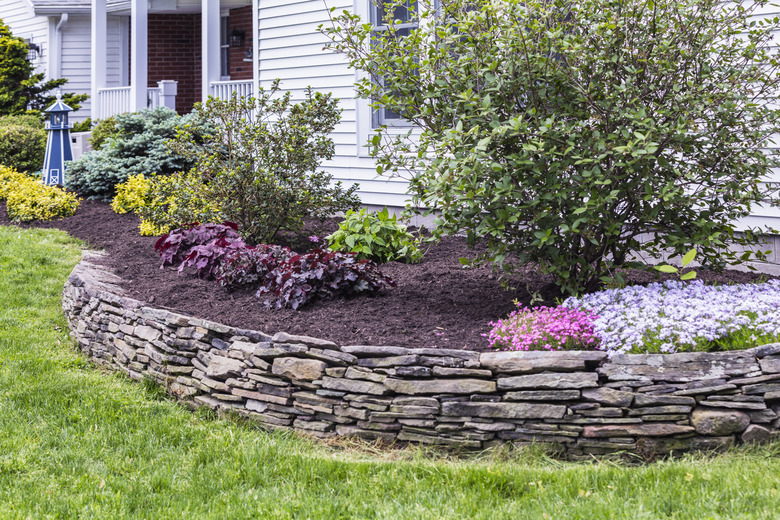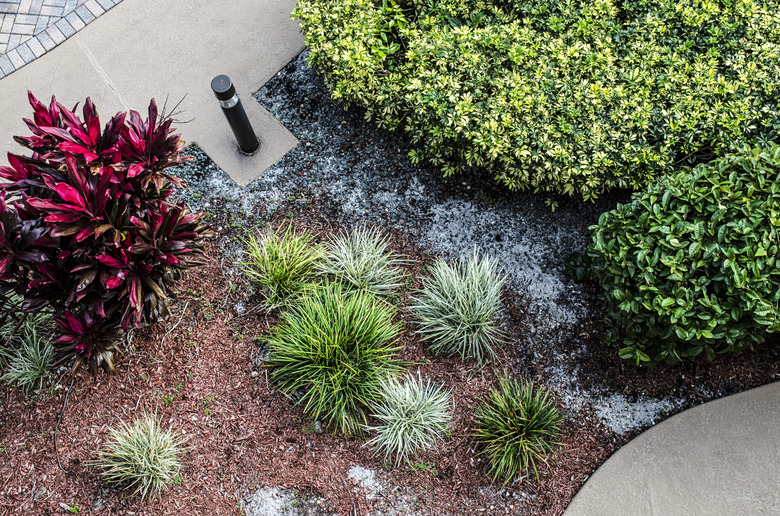How To Maintain Mulch And Plants In Your Landscape Garden Bed
Putting organic mulch in your garden bed will help keep your plants healthy and strong while giving your landscape some added color and appeal. There are many different types of mulch, and although many picture the black, fibrous kind, you can buy from a home improvement store, laying anything from straw to wood chips or leaves in your garden bed can be considered mulching. Choosing the right type of mulch for the plants in your garden bed will go a long way toward keeping both your mulch and your plants strong and vibrant.
Here are the benefits of mulching your garden.
- It helps the soil retain water.
- It helps keep weeds from growing.
- It helps prevent soil erosion.
- It insulates plant roots in both summer and winter.
- Adding mulch reduces the amount of work needed to maintain the bed, but while adding mulch means less weeding and other maintenance, it does require some work to keep it healthy and fresh year-round.
How Much Mulch to Use in Your Landscape Garden Bed
How Much Mulch to Use in Your Landscape Garden Bed
While adding mulch is one of the best things you can do for your garden bed, how much you add is important. Like with most things in life, there can be too much of a good thing. If no mulch is bad, too much can be just as bad. Spreading too much mulch can basically strangle the plants by suffocating the roots. It can also retain excess moisture and attract insects.
Piling or mounding mulch around trunks or woody stems can result in rot and decay. The excess moisture promotes disease, which will damage plants. For a healthy garden bed, you should spread a layer of approximately 3 inches of mulch, keeping the mulch a few inches away from the bases of plants and trees. Use 2 to 4 inches as a safe zone. Anything over 4 inches can result in an unhealthy environment where too much moisture is retained.
When to Refresh Garden Bed Mulch
When to Refresh Garden Bed Mulch
Refresh your garden bed mulch twice a year during the spring and fall by mixing and turning your mulch using a rake or your own hands. This will freshen it up and prevent the mulch from compacting on the soil. It will also allow you to pull away any mulch that has moved or shifted to the base or stems of plants. Organic mulch such as wood chips, shredded bark and straw will decompose over time.
In addition to decomposing, organic mulch can dry out and become less effective over time. When a layer of mulch thins out or if it starts to break apart when you hold it, it's time to add another layer. It's important to add fresh mulch at the right time of year. Later in the spring is better than early because soil that is wet and cool can cause seeds to decay and can slow seed germination. For a healthy garden bed, wait long enough for soil to warm before spreading mulch.
Timing is also important in the fall: The optimal time to apply mulch is late fall after the ground has frozen but before it gets really cold. One key reason is because rodents may nest in the mulch if it is applied too early. One of the benefits of having mulch on the ground during the winter is preventing severe soil temperature fluctuation. Using looser mulching materials like pine straw will protect the plants without compacting against the soil.
One other reason to refresh your garden bed mulch is mainly cosmetic — it helps your garden appear fresher and more vibrant. All mulch will fade over time due to exposure to sunlight and the elements, and while nondyed mulch will fade much quicker than dyed mulch, it will all eventually fade to a bland, often grayish color. Adding a thin layer of an inch or less on top will help cover up the faded mulch. If the existing mulch is old and rotting, you can remove some or all of it and replace it with fresh mulch. Either way, be sure to keep the total amount of mulch under 4 inches to avoid suffocating your plants.
What Mulch to Use
What Mulch to Use
There are many different types of mulch, and some are better than others in certain situations. Many people like to use organic mulch because of the nutrients it provides while decomposing, and because it can often be obtained for free. Compost, for example, is a type of mulch that you'll often find in vegetable gardens but rarely in flower gardens. Lawn clippings and and straw work great as mulch, but they are more likely to be used in a vegetable garden than in a flower garden because they can be unattractive.
Leaves are another source of mulch that works great but is unlikely to be found in a flower garden because it is unattractive. For flower beds, most people use wood chips or bark mulch, which are natural and attractive and are also fairly long-lived. Wood mulch can last for an average of one to three years and sometimes longer depending on the size and composition of the material. Wood chips tend to break down much sooner than high-quality bark mulch. With smaller plants, it's a good idea to use smaller chips because the chips spread more easily than larger pieces.
Other Regular Garden Bed Maintenance
Other Regular Garden Bed Maintenance
Keeping up with the maintenance of your garden bed is very important, but it requires a time commitment and persistence. Beds should be spread with the proper amount of mulch, of course, and refreshed regularly. Mulch may help to deter weed growth, but the garden bed will still need to be weeded on a regular basis — monthly or more often if needed. Other ways to control weeds are to put down landscape fabric before mulching or to apply an herbicide spray. If you worry about chemicals, there are organic alternatives available.
If you are thinking about using landscape fabric to control weed growth, keep in mind that it can be a bad choice if your garden bed is on a slope. This is because the fabric can act as a "slip and slide" for your mulch, allowing it to slide and wash away down the slope.
Grass and other ground cover should be trimmed regularly and shrubs and small flowering trees pruned to maintain a neat but natural appearance. Spade-edging a garden bed every couple of months is another important task that will keep your bed looking its best. An alternative is to create a border out of wood, rocks, decorative stones or any other material you find appealing. This will help the bed maintain a uniform edge by preventing mulch from spreading and washing away.

